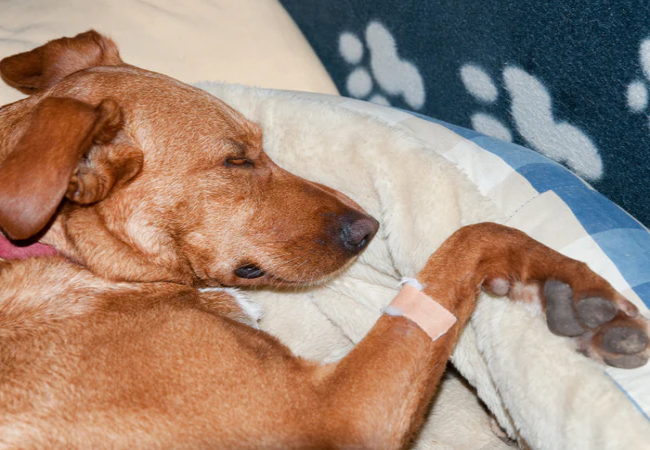Vet Guide to 2025: Why Dogs Sigh—Decoding Their Contentment, Frustration & Health 🐶🩺

In this article
Vet Guide to 2025: Why Dogs Sigh—Decoding Their Contentment, Frustration & Health 🐶🩺
By Dr. Duncan Houston BVSc
If you’ve ever watched your dog sigh deeply, you might’ve wondered—what does that mean? Dogs sigh for a range of emotional and physical reasons that go beyond human-like exasperation. In this article, I’ll walk you through the most common causes of dog sighing—relaxation, boredom, mild frustration, attention-seeking, or occasional discomfort—and explain when it’s a sign to consult a vet. I also share how to respond in ways that strengthen your bond and support their well-being using tools and guidance from Ask A Vet. 🐾
1. What Is a Dog Sigh? 😮💨
Much like humans, a dog sigh is a long, audible exhalation—often through the nose when relaxed, sometimes with the mouth. It’s not panting or whining; it’s one deep, slow breath meant to reset both lungs and emotions.
2. Physiological Purpose: Why Sighs Matter
- 🔄 Lung “reset”: Sighs help reopen tiny alveoli in the lungs to optimize breathing and oxygen exchange.
- 🧘 Emotional regulation: Like us, dogs use sighs to calm down or transition from active to rest mode.
3. Common Emotional Causes of Sighs
a. Relaxation & Contentment
The most common cause—your dog sighs when settling into a comfy bed, after a walk, or during cuddles. Relaxed posture, half-closed eyes, slow breathing—happy sighs.
b. Mild Frustration or Disappointment
If they sigh while watching you leave the room or finish playtime—sitting upright, alert, eyes open—it’s a gentle “wish there was more fun” sigh.
c. Boredom or Under-Stimulation
When rest turns to boredom—a sigh, then a lingering stare at your closed laptop or the TV—your dog is saying, “entertain me, please.” Add toys, puzzle feeders, or walks.
d. Attention-Seeking
A sigh accompanied by a look or nudge while you’re busy? They’re gently saying, “Notice me.” Respond with short engagement, not scolding.
4. Can Sighs Indicate Health Concerns?
Occasionally, sighs can signal discomfort—arthritis soreness, minor pain, or respiratory issues.
- 📌 Frequent deep sighs when lying down or shifting positions—check body language for pain signs like stiffness or reluctance to move.
- 🚨 Signs to watch for: wheezing, labored breathing, coughing, lethargy—these require vet evaluation.
5. Reading Their Body Language
A sigh alone isn’t enough—your dog’s posture provides context:
- 😌 Relaxed sigh: soft eyes, relaxed ears, body at ease.
- 😕 Frustration sigh: body alert, posture upright, fixed gaze.
- 😴 Resting sigh: lying down, maybe dozing off afterward.
- 😧 Discomfort sigh: stiff movements, cautious change in position.
6. How to Respond the Right Way
- 🔹 Relaxation: Offer pets, let them settle, pair with cozy bedding like Woopf calming mats.
- 🔹 Boredom/frustration: Initiate play or a walk—even a short brain game or snuffle mat can help.
- 🔹 Attention-seeking: Acknowledge briefly, then move on so they don’t learn sighing always triggers interaction.
- 🔹 Suspected discomfort: Observe for pain cues, choose Purrz joint supplements, and consult via Ask A Vet for guidance or vet visit recommendation.
7. Tools That Help 🧰
- Ask A Vet App: instant expert help—send a photo or video if symptoms are frequent or paired with health warning signs.
8. When to Contact Your Vet or Ask A Vet
If sighing increases unexpectedly, seems paired with pain, or accompanied by other symptoms like coughing, limping, or appetite loss, schedule a consultation. Ask A Vet can triage symptoms and, if needed, suggest next steps or medications to improve comfort and quality of life.
9. FAQ 🧠
- My dog sighs after grooming—why?
- Probably relief and relaxation from human handling—reward with calm praise and soft bedding.
- Is sighing always good?
- No—context matters. Content sighs are happy, but frequent sighs with pain signs need attention.
- Can I train them not to sigh?
- No need—sighing is natural. Instead, understand and address the root cause (boredom, discomfort, etc.).
10. Summary Table
| Sigh Type | Body Language |
|---|






